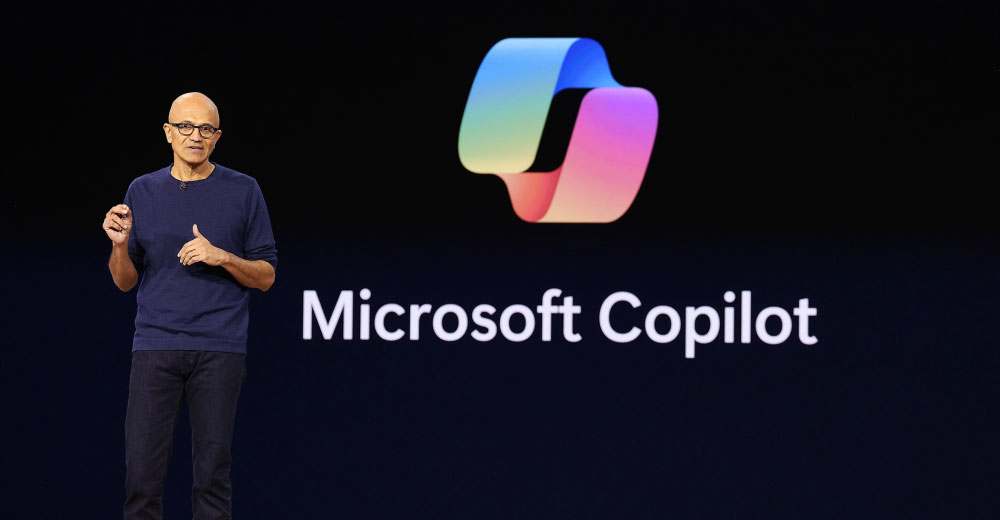Microsoft Ignite is on this week. It’s the company’s massive event focused on IT professionals. While you can attend this event remotely, you should consider attending in person this year because I still see far more AI failures than successes. When AI is deployed successfully, it has a significant positive impact on productivity, yet quality appears to be going in the wrong direction. But not for everyone.
Shows like Microsoft Ignite are full of information on products and services. The event is attended by many IT professionals in different industries, with varying levels of AI deployment and very different paths to success.
With the intense focus on all things AI, and Microsoft Copilot being one of the most widely spread AI tools, being able to talk to the people who have been successful with this tool, which vendors they worked with to deploy it successfully, and what practices helped their success become golden knowledge.
Let’s talk about why this year’s Ignite is important not only to attend — but to attend in person. We’ll close with my Product of the Week: Bluesky, the social media platform I hear people are having the best success with as they move from Twitter/X.
The Value of Relationships
Building strong vendor and peer relationships is essential for AI success, especially when navigating the complexities of new technology like Microsoft Copilot, which appears to be the most successful AI offering in the market so far. It has enormous productivity-improving value to every product it enhances.
Because Microsoft is a platform, tools, and cloud company, its tools tend to be relatively unfocused in terms of industry or geography. This broad applicability doesn’t preclude tuning; it indicates the tools can be useful to almost every company, from enterprises to small businesses.
While smaller companies will likely use AI as a service, enterprises are increasingly likely to use tools hosted on their own hardware or in a hybrid approach where sensitive information is retained, AI is accessed on-premises, and less secure information and implementation that don’t require low latency can be cloud-deployed.
The issue to address is that service providers, OEMs, and most companies trying to ramp up AI don’t know enough about it to succeed. However, the people who understand AI and have had successful AI deployments (particularly the early adopters Microsoft assisted) will be at Ignite. Meeting these experts could make a difference in whether you overspend on these tools and help avoid common mistakes by learning from the mistakes of others and being able to delineate the hype from reality.
Genuine Value vs. Exaggerated Claims
I learned this lesson a few decades ago when Microsoft held an event arguing that its Windows NT servers could replace mainframes. When I had a chance to talk to two of Microsoft’s reference accounts, it became clear that Windows NT wasn’t ready to replace mainframes for most organizations.
The first indicated that it was working very well and had effectively replaced their mainframe, but also that had Microsoft not paid for the deployment, they’d never have been able to afford it.
The second account didn’t have a lot of time to talk to me because their NT servers had gone down, and the CEO was pissed. The poor guy likely thought his job wouldn’t survive the result.
Vendors tend to overpromise and underdeliver. Microsoft is better than many, but it has had this problem in the past. When it comes to AI, while Copilot is performant, it appears to have a significant adverse impact on quality, which is only a dealbreaker if you can’t mitigate it.
At Ignite, you can learn from the early adopters where the hype matches reality and where it doesn’t and how to mitigate the damage from the latter. You don’t want to be that poor guy who was an early adopter and likely lost his job as a result. These people can help ensure that your initial AI implementations with Copilot are something you can be proud of, not something you’ll be hiding from.
Microsoft Partners
At Ignite, there are always a lot of Microsoft partners, and every one of them will tell you that they are the partners for you. But along with these vendors are their customers who have used their services and deployment teams. Even if an OEM or service provider has a successful process, given how rapidly they’ve had to ramp up, some teams know what they are doing, and some are learning on the job.
Given that large language models (LLMs) cost around $100 million to develop, learning on the job can be incredibly expensive and embarrassing for the individuals or organizations that hire the teams tasked with training these models. Asking about not only the vendors IT professionals used successfully but also the specific teams they used can inform you which vendors are better than others and which vendor teams are better than others.
I once met with an executive who correctly identified the best vendor for a specific task only to find that the team was unavailable. So, they passed and went with a different vendor who could provide their most successful team for the deployment. The effort’s result was successful, but it might not have been if he had not looked under the covers to ensure the competency of the vendor and the team that provided the critical service.
Wrapping Up
AI is in the midst of a significant feeding frenzy. Most failed deployments appear to be primarily due to the immaturity of the tools, the inexperience of the vendors and customers, an excessive focus on productivity, and an inadequate focus on quality. This doesn’t mean that AI is crap. It isn’t, and it is working for an increasing number of companies.
The problem is the inability to delineate between those products, tools, and vendors that are competent for your industry and company and those that are not. Because of Microsoft’s leadership in AI, Ignite is one of the few places to get the critical information you need to make better choices and ensure your expensive AI deployment is successful.

Bluesky
Since Elon Musk took over Twitter and renamed it X, many users have been looking for an alternative service. Mastodon and Meta’s Threads initially looked like good alternatives, but both products had issues.
While capable, Mastodon was somewhat difficult to use and hasn’t lived up to being a Twitter replacement. Threads got a huge initial bump, but it fell off quickly because it lacked many of the features people relied on with Twitter. People still use both platforms, but they don’t seem to be the go-to replacement for Twitter/X.

Bluesky, at least for now, has gained traction as a viable replacement. It is relatively easy to use, and more feature-rich than Threads initially was. I’m getting inquiries from all over the world on that platform this week as more and more people globally abandon or cut back on their use of Twitter to use Bluesky instead.
Social media is a thing, and while it might be healthier not to spend as much time on it, Bluesky continues to be a much more balanced platform, one I and others feel safe using. It reminds me of the early days of Twitter when the tool was fun to use, and you didn’t end up wasting time in online arguments with people who seemed outright crazy.
For me, Bluesky is safer, more fun to use, and less full of misinformation than Twitter. It appears to be the best Twitter alternative for now, so it’s my Product of the Week.


























































